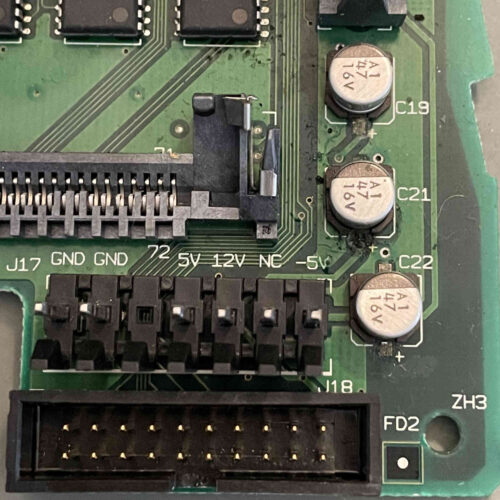A pink and green bow tie Steve Jobs wore to introduce the Macintosh computer more than 40 years ago just sold at auction for $35,750

Michael L Abramson/Getty Images
- A piece of Apple memorabilia auctioned for tens of thousands of dollars.
- A colorful bow tie worn by late Apple cofounder Steve Jobs sold for $35,750.
- He wore it when he debuted the company's Macintosh computer at an annual shareholder meeting in 1984.
When it came to fashion, Steve Jobs was perhaps best known for his signature black turtlenecks. But he wore a more obscure and much more colorful bow tie to unveil a monumental product in the company's history.
The pink-and-green striped bow tie belonging to the late Apple cofounder just sold for $35,750 to the highest bidder after Julien's Auctions concluded an auction called "Spotlight: History and Technology" on Thursday.

Julien's Auctions
Jobs wore it at an annual shareholder meeting in 1984, where he introduced the Macintosh computer. It had 27 bids, according to the item listing and was only estimated to sell for $1,000 to $2,000.
He also wore the bow tie on a few other occasions, including two photo shoots surrounding the computer's release.

Julien's Auctions
A year prior, Jobs had also worn the tie while speaking at the International Design Conference in Aspen, Colorado, where he joked, "They paid me sixty dollars, so I wore a tie."
Other relics from Steve Jobs-era Apple have hit the auction block before, including a turtleneck of his, as well as his old business cards.
Products from Apple's early days have also been auctioned. In 2022, for example, an unopened first-generation iPhone from 2007, still in its original box, sold for more than $39,000 to the highest bidder. A year later, another unopened first-gen iPhone auctioned for a whopping $190,000.
Besides Jobs' bowtie, Julien's Auctions also listed other items in its auction, including Meta CEO Mark Zuckerberg's old Facebook hoodie, which went for $15,875, and a photo of a SpaceX rocket launch signed by CEO Elon Musk, which sold for $10,400.

